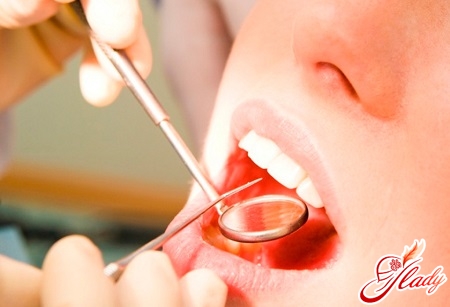 Coryza. Everyone is used to it and does not consider it to be anything special, worthy of attention. Of course, nasal congestion gives a sick person a lot of inconveniences: reddened nose, headache, handkerchiefs and slanting looks around people who think you are a hotbed of infection.
Coryza. Everyone is used to it and does not consider it to be anything special, worthy of attention. Of course, nasal congestion gives a sick person a lot of inconveniences: reddened nose, headache, handkerchiefs and slanting looks around people who think you are a hotbed of infection.
Causes of a cold
However, nasal congestion is not always causeda common cold. Where does the cold come from? What is popularly called the not-so-good-sounding word "snot", in medicine is called rhinitis. Rhinitis is an inflammatory process in which the mucous membrane of the nasal cavity is involved. Of course, in order for this inflammatory process to develop, you need an excuse. Most often this is the penetration into the human body of various viruses. However, in addition to viruses, there is a huge number of very different causes that can cause nasal congestion. Such reasons include:
- Cold air environment, or sudden temperature changes.
- Use of spicy food or spicy seasonings.
- Enlarged adenoids, most often in a child.
- The effect of various environmental stimuli.
- Effects on the mucous membrane of the nose of tobacco smoke, especially with passive smoking.
- Presence of foreign bodies in the nasal cavity.
- The presence of various structural disorders, for example deviation of the nasal septum.
- Various allergic reactions.
- Presence of polyps in the nasal cavity.
- Various tumors of nasal passages.
In order to reliably determine which cause is caused by a runny nose in each particular case, the sick person should seek medical help from a doctor.
Acute rhinitis
Doctors distinguish two varieties of the form of rhinitis: chronic and acute course. Acute rhinitis is most often a symptom of acute respiratory diseases, such as ARVI or influenza. On the share of such colds account for about 70% of all cases of malaise, most often they occur in children and adolescents. Acute rhinitis proceeds according to the classical type, in three stages of development:
- Reflex stage
Nasal congestion begins with the first,reflex, stage. It flows as follows. The body of a sick person is supercooled, the immunity decreases, and the vessels of the nasal mucosa expand dramatically. As a result, the pronounced dryness of the mucous membrane first appears, and then edema develops, which causes a runny nose.
- Catarrhal stage
In the second, catarrhal stage of development of rhinitis, onthe mucosa is activated by viruses. Because of the mucosal edema, an increased amount of blood flows into it, which leads to activation of the work of those glands that produce mucus. The sick person notices rather plentiful allocation from a nose, having a liquid consistence. The ability to perceive odors is greatly reduced. Approximately at the same time, the diseased person begins to show damage to other organs associated with the nasal cavity - there is increased lachrymation, a change in the voice, there is a puncture of the auditory canals. At the third stage of the disease, the swelling of the mucous membrane is significantly reduced, the ability to smell and normal breathing is restored. The very discharge from the nose becomes much more dense. And in the event that they change the coloration to a dark yellow or yellowish green color, the doctor may suspect attachment of a secondary, most often bacterial, infection.
Chronic rhinitis
The second form of rhinitis is chronic. The chronic form of the disease most often occurs as a result of improper treatment of the acute form of rhinitis. In addition, chronic rhinitis can be caused by such factors as allergic diseases, occupational adverse factors, disruption of the normal circulation of the mucous membranes of the nasal cavity. There are several varieties of chronic rhinitis.
- Chronic hypertrophic rhinitis
In the event that a patient has thisform of chronic rhinitis, the doctor notes the growth and a significant increase in the volume of mucous membranes, and in especially neglected cases and bone tissue. Most often, similar pathologies result in systematic acute rhinitis. And in addition, to such changes with a very high probability leads uncontrolled use of vasoconstrictive drops. The patient in this case complains of a systematic discharge from the nose, difficulty in nasal breathing and headaches. To a great extent, the sense of smell and taste are broken, the voice changes. Due to the fact that the sick person is forced to breathe through the mouth, the mucous membrane of the mouth constantly dries up. This leads to a constant feeling of thirst.
- Chronic atrophic rhinitis
In the event that a person suffers from this formrhinitis, it has a significant thinning of the nasal mucosa. As a result, a sick person complains of a feeling of dryness and a foreign body in the nasal cavity. Allocations from the nose are not heavy, but they are extremely thick and dry, creating crusts. These crusts can hide under a bacterial infection. Most often, such nasal obstruction occurs as a result of unfavorable occupational factors. The forecast in such cases is not favorable enough.
- Allergic rhinitis
Coryza, caused by allergic reactions,also almost always carries a chronic form. Depending on the frequency of occurrence of attacks of chronic rhinitis, two forms are distinguished: permanent and seasonal. In a person prone to allergic reactions, immediately after he came into contact with allergens, there is a strong rhinitis, abundant discharge, sneezing. However, the stuffiness of the nose without a cold is also present. In the same case, if there is no contact with the allergen, the person remains practically healthy.
- Chronic vasomotor rhinitis
A similar rhinitis appears ifthere is a pathological change in the vessels of the nasal mucosa due to changes in the body. Such changes include any changes in the hormonal background. Incidentally, this is why many pregnant women so often complain about a common cold that often occurs. 
Treatment of a cold
Coryza as such is not for the bodyman no danger. However, if the treatment of the common cold is wrong or if the nasal congestion is not treated at all, the infection can spread far beyond the nasal cavity. And then complications are almost inevitable: etmoiditis, sinusitis, pharyngitis, laryngitis and acute otitis media. That is why it is so important to properly treat the common cold. Many people think that treating a runny nose does not make any sense, as it passes quickly enough itself. However, such an approach is fundamentally wrong. Absolutely nothing to cross out of your life, and even take risks and find out if there will be complications, also not worth it. Begin the treatment of a runny nose as soon as possible. First, the patient is assigned a strict home treatment. Firstly, a person gets an opportunity to relax, and secondly, thus eliminating the risk of contracting ARD surrounding people. Immediately begin non-drug therapy. The most effective thermal procedures: a sick person should as soon as possible get his feet, drink hot tea, make inhalation. By the way speaking. If a sick person does not have propensities to allergic reactions, inhalations with oils of eucalyptus, mint and tea tree will be very effective. They can be carried out even if there is no inhaler. It is enough to drop a couple of drops of oil in a liter of hot water and breathe fumes, first covering your head with a towel. Also, close attention should be paid to the issue of hygiene of the nasal cavity during the period of the disease. For a successful cure, it is necessary to properly clean the nasal cavity of mucus. In no case should you blow both nostrils out at once. It is necessary to do this in turn, and pay attention to the fact that the mouth should be slightly ajar. Such a measure will avoid the occurrence of excessive negative pressure and, consequently, injury of blood vessels. And, of course, it is preferable to use disposable handkerchiefs to avoid repeated self-infection. Drug treatment is chosen by the doctor depending on why the nasal congestion has arisen, and also at what stage the disease is. Thus, for example, vasoconstrictive drugs should be used only in the initial stage of the disease. And their use should be short-term - no more than five days. Otherwise, there is a risk of a pathological change in blood vessels. At the second stage of the disease, when the body tries to get rid of bacteria on its own and a copious rhinitis appears, one can help him. It is advisable to wash the nose with saline solutions, or with decoctions of chamomile or calendula. In the same case, if a cold is caused by allergic reactions of the body, the following measures must be taken. First, maximally limit the contact of a sick person with allergens. And secondly, a sick person should start taking antihistamines as soon as possible. By the way, such drugs should be prescribed only by a doctor. In any case, if you have nasal congestion, treatment is simply necessary. Do not underestimate the potential danger of a common cold. Any pathological change in the human body should be eliminated as quickly as possible.









